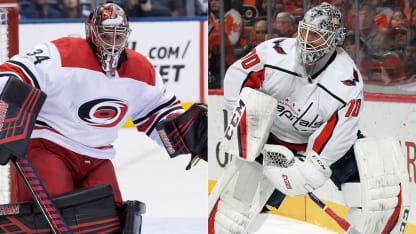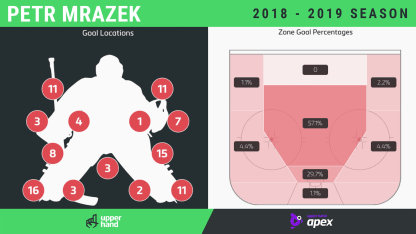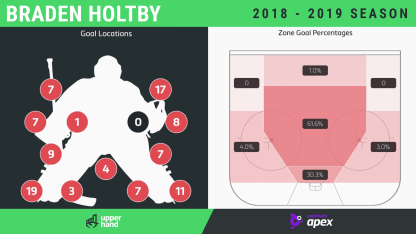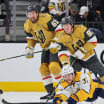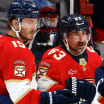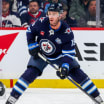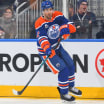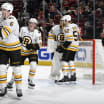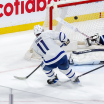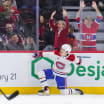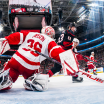Lateral and quick:Of the 95 goals Mrazek gave up this season, 45, or 47.4 percent, came off plays and passes across the slot line, an imaginary line that divides the offensive zone from the goal line to the top of the face-off circles. These are tough plays for every goaltender because they have to rotate completely from one side to the other, and there were plenty of goals on cross-ice passes off the rush that Mrazek didn't have much of a chance on. But there were also a lot of times he didn't give himself a chance because of a tendency to set up outside his posts laterally on the initial puck carrier, increasing the distance he has to cover to get across to the other side. Too often Mrazek didn't get across in time, no matter how strong his pushes or extended he can stretch his pads, which played a role in 40 goals off one-timers and quick shots, and 27 along the ice outside of his skates, indicative of an open-net shot.
Against the grain: Mrazek gave up 26 against-the-grain goals (27.4 percent), more than 10 percent above the tracked average (16.9 percent). There were several factors on these plays that caught him moving one way before shooting, passing or pulling the puck back the other way. Part of it simply is aggressive positioning and the extra movement that comes with it, including a tendency to slide laterally on his knees on plays he could beat on his skates, though it seemed more prevalent early in the season. There also are some movement inefficiencies that can leave him late to position, and behind the play when the puck is moved again quickly. Mrazek also tends to push into point shots laterally rather than reaching, which normally is a good thing, but can leave him going the wrong way on deflections and rebounds.
Sharp angles: Mrazek gave up one goal from below the goal line, but inconsistent sharp-angle tactics and movement in and off his posts factored into 11. He got caught outside his post on several rush chances, delaying his ability to get across if they became wraparounds.
